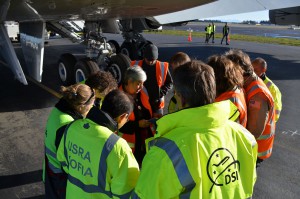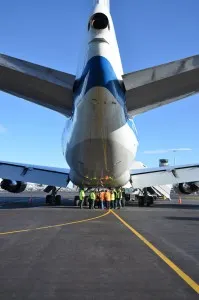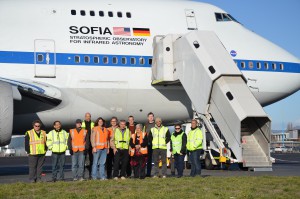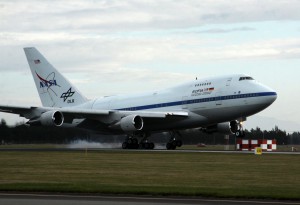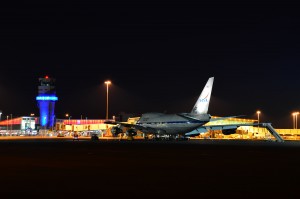By L. Andrew Helton
Many thanks to the telescope operators for helping us through these complicated observations. The instrument for tonight’s and tomorrow night’s flights is the Cornell University developed Faint Object infrared CAmera for the SOFIA Telescope (FORCAST), a dual-channel mid-infrared camera and spectrograph sensitive from 5 to 40 microns.. SOFIA flies above 99% of the water vapor in Earth’s atmosphere that blocks infrared radiation from reaching the ground. The super dry atmosphere over the southern ocean was exceptionally good for the duration of the flight, which enabled the team to get better results.
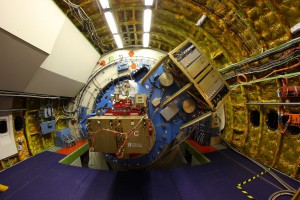
During the first science leg we observed V1309 Scorpii. At first this object was thought to be a “classical nova,” where a white dwarf star accretes material onto its surface from a companion star until the material ignites, causing a surface explosion. But it was later determined to be an explosion resulting from the merger of a binary star system, where the two stars spiral in toward one another until they finally collide. This is a very faint source that proved to be exceptionally challenging to get set up to observe. Once the observations were under way, however, the data looked to be acceptable. Luckily most of the effort was front-loaded, since soon after we began observing in earnest, the flight crew notified us that we could see the aurora outside. And it was just stunning, brighter and more active than anyone on the main deck had ever seen.
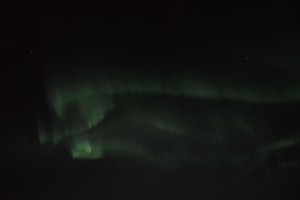
The following science leg included observations of Eta Carinae, a system of two stars that are five million times brighter than our Sun. Eta Carinae can only be seen from the Southern Hemisphere, and this observation was the focus of our guest investigator, Pat Morris, from the California Institute of Technology, who was on board to assist with data collection. These observations proved to be challenging. The goal was to observe the faint emission surrounding Eta Carinae that originated in an earlier period of mass loss. To see this emission, we had to very carefully position the observation field next to Eta Carinae itself, the brightest IR stellar source in the sky. Unfortunately, besides the difficult setup, there were some technical issues on this leg that resulted in some lost observing time. Nevertheless, the data obtained looked very good. We are well positioned to optimize our observations of Eta Carinae on upcoming flights.
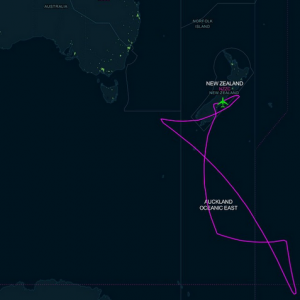
The last object we observed this evening was Westerlund 1 – one of the most massive star clusters in the Milky Way Galaxy. These observations were straightforward and rewarded us with some beautiful images of the most densely populated field observed by the FORCAST team to date.

